 The Heirloom Sampler Blanket, .
The Heirloom Sampler Blanket, . Welcome to Granny Square Flair!
Welcome to Granny Square Flair! I love nothing more than sitting down with some yarn and my hook to design new granny squares. I love the problem solving, the Eureka! moment when an idea comes to life, trying out new yarns and colours. Its all so much fun. Granny Square Flair was born from this joyful exploration.
Ive gathered fifty of my original designs in this book, taking the humble granny square in exciting new directions. The textbook definition of a granny square is a square piece of fabric textile crocheted while working in rounds from the centre outwards. I prefer to describe them as bite-sized adventures in yarn where you get to play with lots of different stitches and techniques to create little bits of joy. You can then combine them to make all manner of wonderful things. Making crochet squares is gratifying in so many ways. They give you a sense of achievement, since you can complete a square easily in one sitting.
You get to do a little happy dance every time you finish one. Theres no boredom caused by working endless rows all the same. Plus, youll reap the many benefits of keeping your mind and your hands happily occupied creating something beautiful. If all that isnt enough, granny squares are the perfect portable project. Theyre great for the daily commute, or for when youre in the passenger seat on road trips. Treat them as a break in your busy day, your relax and forget about the world time.
If you make a granny square every day or so, youll have enough for a whole project in no time at all! The patterns in this book run the gamut from quick and easy to those requiring a little more concentration. Ive assumed that you have basic crochet skills. This is not a learn to crochet book, but rather a resource to create your own projects, expanding your skills and confidence as you play with the patterns. In addition to the patterns for the fifty squares, youll find complete instructions for eleven beautiful projects you can make with them. But dont limit yourself to these projects. My hope is that you use these patterns in ways that mean something to you, to make what you want.
To that end, Ive provided guidance on designing your own projects as well. I hope my book will inspire you to try new techniques, expand your crochet skills and create some crochet wonders you and your loved ones will cherish for years to come. Now go swing that hook! xx Shelley Get ready to crochetWhat you need to have Lets have a look at the supplies youll need to have on hand.  Hooks While the business end of crochet hooks is fairly standard, their design and construction vary greatly. Some are a simple shaft and hook but others have handles of many shapes and sizes. They can be made of many different materials too, from metals to woods to plastics and combinations of all of these.
Hooks While the business end of crochet hooks is fairly standard, their design and construction vary greatly. Some are a simple shaft and hook but others have handles of many shapes and sizes. They can be made of many different materials too, from metals to woods to plastics and combinations of all of these.
If youre going to spend a lot of time crocheting, investing in a good set of hooks can make the experience so much more pleasurable, allowing you to crochet for long periods of time comfortably. The hook you choose will depend on your personal preferences and crochet style. Some suit the overhand/knife hold, while others are best for the underhand/pen hold. Regardless of hook style, the size I recommend for the patterns in this book is 4 mm/G if youre using 8 ply/DK/light worsted yarn. Of course youre not bound by this! Experiment! If you want to use a thicker 10 ply/aran/worsted yarn or a thinner yarn like a 2 or 4 ply/fingering, go for it. Begin with the hook size recommended on the yarn label.
If you like the density and drape of the pattern, great! Continue on. If you want a firmer, stiffer fabric, use a smaller hook. Conversely, if you want a lacier fabric with more drape, use a larger hook. Changing the yarn and hook from what Ive recommended can result in squares of a different size. That doesnt matter unless youre making garments or matching my patterns with those from other sources. A blanket is a blanket no matter the size.
If you use a heavier weight yarn and larger hook, your end product will be larger, and it will be smaller with a lighter yarn and smaller hook. The amount of yarn required will change a little as well as the size. Do your calculations at the beginning of your project and all will be well. Yarn Ah yarn. So much to choose from! There are many factors that will influence your yarn choice. Fibre Yarns are constructed from many different fibres; cotton, wool (sheep, alpaca, angora, cashmere, yak), linen, bamboo and man-made fibres like acrylic and nylon.
Allergies may exclude some fibres from your selection. Man-made fibres and some yarn processing methods may conflict with your environmental values, excluding others. Construction How each yarn is constructed can also impact your choice. A yarn with a low twist may be prone to split making it difficult to crochet with. A more tightly twisted yarn may produce a stiffer, less flexible fabric. A fluffy yarn will hide intricate stitches, whereas a cotton yarn will show each stitch clearly.
Cost Cost can be a big part of your yarn decision, especially when you consider the quantities of yarn needed for larger projects. Its a good idea to think about the time and love youll be investing in your project. Investing in a lovely yarn as well will mean loving the end result so much more. Project The purpose of your project should influence your yarn choice. If youre making a pet blanket, then an easy-care acrylic may be your go-to yarn. A baby blanket needs to be soft and easy to wash, so a blend may work best.
If youre making a bag, you may want to use a mercerised cotton yarn for added durability. What is best for you and your project will depend on your personal preferences. Personally, I love soft, non-mercerised 8 ply/DK/light worsted cotton yarns because I make mostly blankets and I love the soft drape and stitch definition this yarn yields. No one wants to snuggle under a scratchy, stiff blanket! Youll need to decide what yarn best suits your personal preferences, budget and purpose. Other useful things to have A nice sharp pair of scissors A tapestry needle A tape measure Stitch markers (scraps of yarn work just fine) Blocking board and pins 

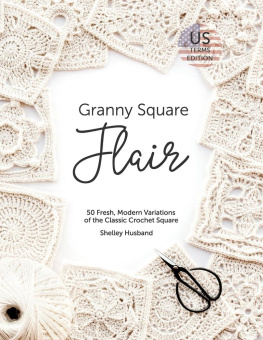
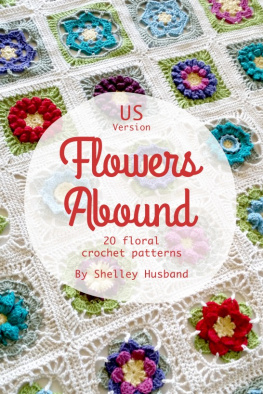
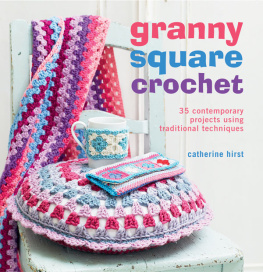
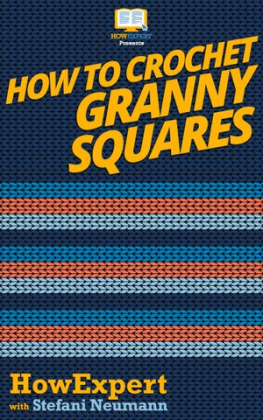
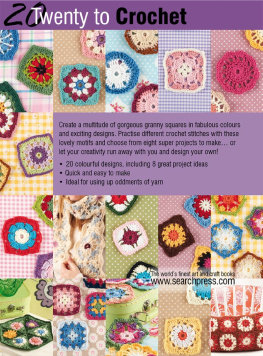
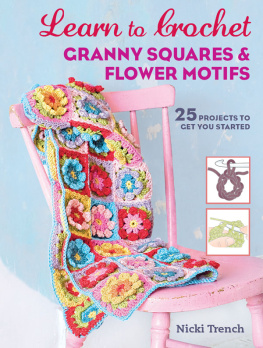
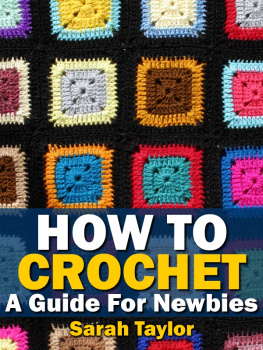

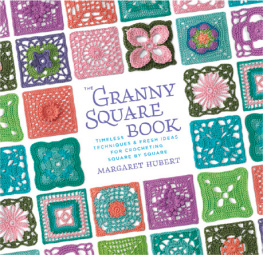
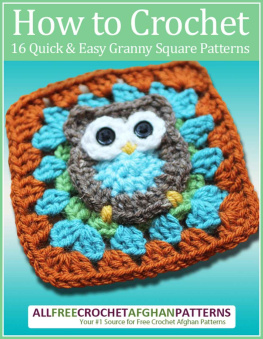
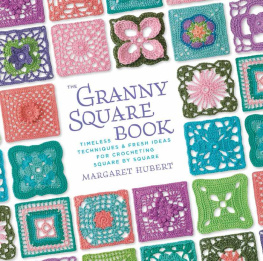
 Copyright 2018 by Shelley Husband All rights reserved. No part of this publication may be reproduced or transmitted by any means, electronic, photocopying or otherwise without prior written permission of the author. ISBN-13: 978-0-6483497-1-6
Copyright 2018 by Shelley Husband All rights reserved. No part of this publication may be reproduced or transmitted by any means, electronic, photocopying or otherwise without prior written permission of the author. ISBN-13: 978-0-6483497-1-6 The Dahlia Scarf, .
The Dahlia Scarf, . The Heirloom Sampler Blanket, .
The Heirloom Sampler Blanket, . Welcome to Granny Square Flair! I love nothing more than sitting down with some yarn and my hook to design new granny squares. I love the problem solving, the Eureka! moment when an idea comes to life, trying out new yarns and colours. Its all so much fun. Granny Square Flair was born from this joyful exploration.
Welcome to Granny Square Flair! I love nothing more than sitting down with some yarn and my hook to design new granny squares. I love the problem solving, the Eureka! moment when an idea comes to life, trying out new yarns and colours. Its all so much fun. Granny Square Flair was born from this joyful exploration.  Hooks While the business end of crochet hooks is fairly standard, their design and construction vary greatly. Some are a simple shaft and hook but others have handles of many shapes and sizes. They can be made of many different materials too, from metals to woods to plastics and combinations of all of these.
Hooks While the business end of crochet hooks is fairly standard, their design and construction vary greatly. Some are a simple shaft and hook but others have handles of many shapes and sizes. They can be made of many different materials too, from metals to woods to plastics and combinations of all of these.